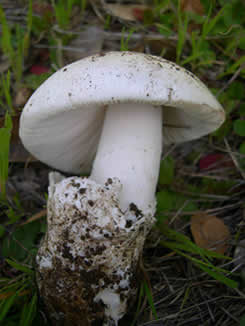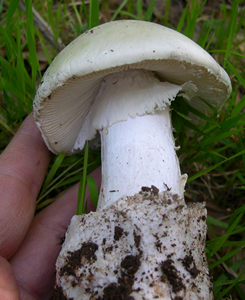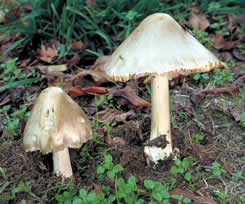mushroom poisonings
When Mushrooms Kill: Thoughts on Mistaken Identity

White phase Amanita velosa
In the San Francisco Bay Area, it seems that every few years we read about some unfortunate individual or family who has eaten deadly poisonous amanita mushrooms. Poisonings from Amanita ocreata, our native, white “Destroying Angel” are fortunately rare. But we can expect to see and hear more of these stories as the invasive Amanita phalloides (the “Death Cap”) spreads throughout the state.
Although lurid tales of painful mushroom poisonings often make the newspapers and television, it is rare that there is any kind of preventative follow-up, and rarer still that we find out just what the mushroom hunter/eater was thinking when he/she ate the mushroom.

Experienced (and sometimes unsympathetic) mushroom hunters can conjecture endlessly over why these deadly mushrooms are eaten. The oft-repeated story is that Amanita phalloides resembles the commonly cultivated and eaten paddy straw mushroom of Asia, with its greenish cap and amanita-like volva (see photo below).
 Amanita ocreata, growing 4 feet away |
Recent immigrants may be picking mushrooms that remind them of edible mushrooms from home, or they may be inexperienced foragers. Without asking the victims directly, we really don’t know why they did it. |


Volvariella sp. and Amamanita phalloides growing side by side in Australia
© Photographer: Heino Lepp
